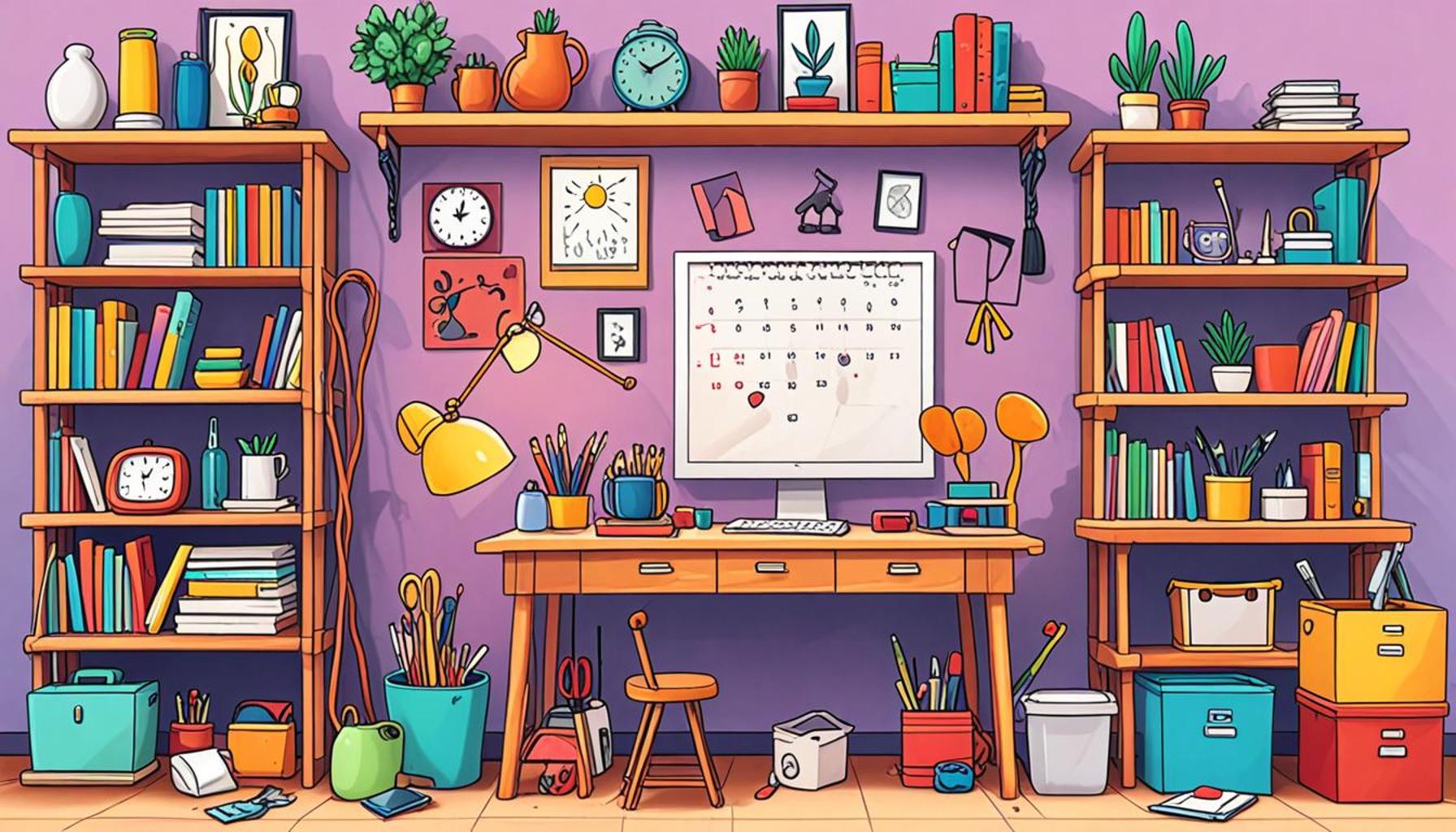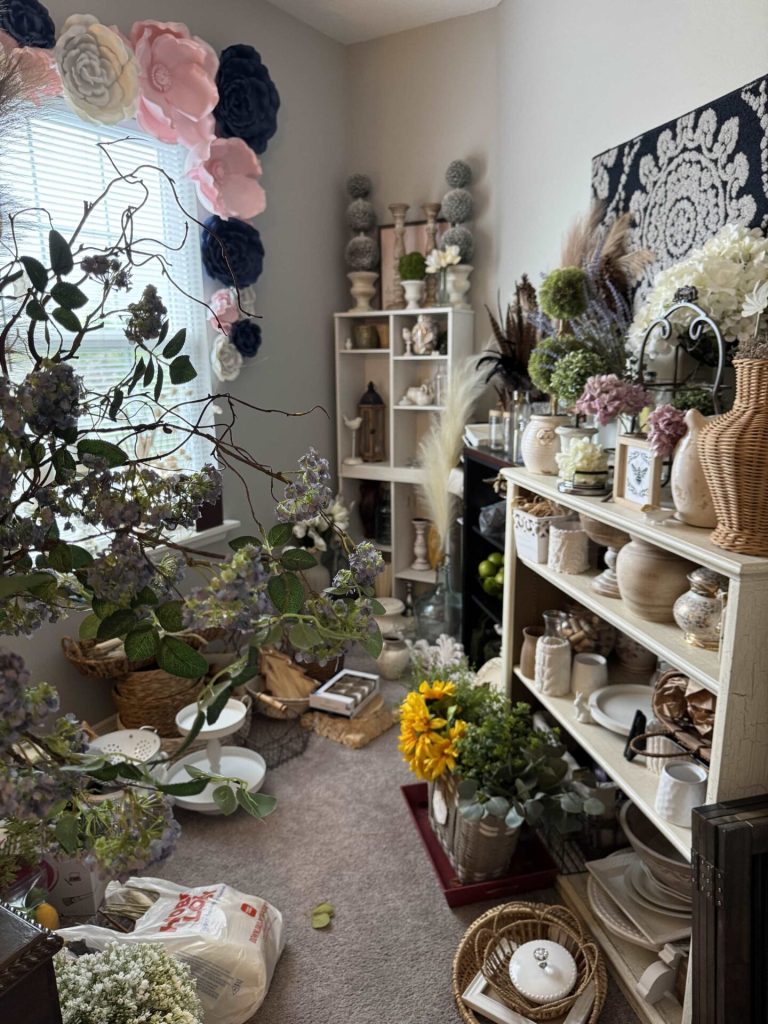How to Create a Decluttering Schedule: Step by Step to Organize Your Space Over Time

Benefits of a Decluttering Routine
In today’s fast-paced world, clutter can accumulate quickly, leading to increased stress and disorganization. More than just a nuisance, clutter can affect our daily lives, impacting our mood and productivity. It has been shown that a disorganized environment can hinder focus and creativity, making it difficult to perform tasks efficiently. For many, finding a balance between work, family commitments, and personal time can be challenging, which makes a decluttering schedule not just beneficial, but essential.
Establishing a decluttering schedule helps cultivate a routine that can be maintained over time, creating a sustainable approach to keeping your living space organized. Ensuring that regular intervals of decluttering are incorporated into your week or month can lead to lasting results. Here’s how you can transform your life by implementing this practice:
- Consistency: By setting specific times for decluttering sessions, whether weekly or monthly, you can effectively manage the buildup of materials in your home. For instance, dedicating every Sunday afternoon for an hour to sort through your belongings can create a habit that keeps your space tidy beyond the initial effort.
- Focus: Concentrating on one area at a time, such as a single room or even specific items like books or clothes, increases your chances of achieving better results. The satisfaction of completing a task can motivate you to tackle other cluttered areas enthusiastically.
- Less Stress: Adopting a systematic approach minimizes the anxiety that comes with a messy space. Research indicates that environments cluttered with unused items can lead to higher cortisol levels, the stress hormone, thereby negatively affecting mental health.
Moreover, the process of decluttering can provide a sense of accomplishment and control. By sorting, donating, or discarding items that no longer serve a purpose, you create space not only physically but also emotionally. This practice encourages mindfulness, as it forces individuals to make decisions about their belongings and reflect on their importance in daily life.
This guide will provide insights into creating an effective decluttering schedule tailored to your lifestyle. You will learn step-by-step methods to gradually organize your space, ensuring that your home remains a haven of calm amidst daily chaos. Consider incorporating elements like a digital inventory or use of online donation services to streamline the decluttering process. Ready to dive into a more organized life?
DON’T MISS: Click here to keep your momentum going

Creating Your Personalized Decluttering Schedule
The first step in establishing an effective decluttering schedule is to assess your current environment. Take a moment to evaluate the areas in your home that require the most attention. Whether it’s a cluttered garage packed with items you haven’t touched in years or a living room that serves more as a storage space than a gathering place, recognizing what needs decluttering is crucial. Create an inventory of these spaces and the items that reside within them. This step paves the way for a more structured and successful approach.
Next, it’s essential to set realistic goals for your decluttering process. Depending on the size of your home and the amount of clutter, you may want to break your goals into smaller, manageable tasks. Here are some recommendations to kickstart your journey:
- Break it Down: Start with one room or area at a time. For instance, if you’re tackling your kitchen, focus on one cabinet or countertop each session instead of overwhelming yourself.
- Choose Time Slots: Pick specific days of the week or hours in the day to dedicate to decluttering. Many find weekends more manageable, while others prefer to engage in short 20-minute sessions during weekdays.
- Prioritization: Select areas that have the most impact on your daily life. For example, decluttering your bedroom may improve your sleep quality, while organizing a home office can enhance work productivity.
Once you have a clear picture of what needs attention and how to handle it, the next phase involves developing a timeline for your decluttering efforts. Creating a calendar that outlines what you aim to accomplish each week can keep you motivated. For example, if you designate each Sunday for decluttering, this consistency will help ensure you don’t fall back into old habits. Consider assigning each month a particular theme, such as focusing on clothing in January and pantry items in February. This allows you to allocate time purposefully and avoid feeling overwhelmed.
Furthermore, it’s helpful to use a visual reminder system. This could take the form of a wall calendar, a planner, or even a simple checklist on your smartphone. Tracking progress visually can help cultivate motivation and accountability. You might also want to consider sharing your decluttering goals with a friend or family member. Enlisting support creates a sense of camaraderie and can make the process more enjoyable.
The psychological benefits of having a plan are manifold. Not only does it provide a clear direction for your decluttering tasks, but it also instills a sense of achievement as you mark items off your list. Remember, the objective isn’t to eliminate every piece of clutter overnight, but rather to create a sustainable process that fosters a peaceful living environment and cultivates long-term organization habits.
Creating a decluttering schedule is key to transforming your living space into an organized oasis over time. In this phase of your journey, you’ll want to establish a clear plan that works for your unique lifestyle and space. Below, let’s explore some essential steps to develop an effective decluttering routine.
Step 1: Assess Your Current Situation
Before diving into decluttering, take the time to evaluate your home. Walk through each room and note the areas that require the most attention. Do specific rooms seem more chaotic than others? Identify the clutter hotspots and determine potential categories for sorting items – such as “keep,” “donate,” and “discard.” This initial assessment sets the foundation for your decluttering plans.
Step 2: Create a Realistic Timeline
With a clearer picture of your clutter, you should develop a schedule that suits your pace. Divide your decluttering efforts into manageable sessions, whether it’s dedicating an hour a week or focusing on one room per weekend. Having a flexible timeline can reduce feelings of overwhelm, making it easier to stay committed and focused in the long run.
Step 3: Set Specific Goals
For each session, outline specific, achievable goals. Instead of vague objectives like “clean the closet,” aim for tasks like “organize shoes and donate those not worn in the past year.” Setting targeted goals helps maintain motivation, as you can see progress and celebrate small victories—whether that’s freeing up space in your closet or reorganizing your kitchen cabinets.
Step 4: Implement the ‘One In, One Out’ Rule
To prevent clutter from accumulating again, consider adhering to the ‘One In, One Out’ principle. This means that for every new item you bring into your home, one should go out. It’s a simple yet effective strategy to maintain balance and continuously manage your possessions.
Step 5: Maintain Consistency
Consistency is crucial in keeping your space organized. Once you’ve completed your initial decluttering, set aside time each week or month to assess whether your belongings remain in check. Routine maintenance is essential to ensuring that your decluttered spaces stay organized.By integrating these steps into your decluttering schedule, you’re not just organizing your space—you’re cultivating a lifestyle that prioritizes cleanliness and order. The journey to a clutter-free home takes time, but with a structured plan, you will uncover the benefits of a more organized environment, enhancing your overall well-being and productivity.
DISCOVER MORE: Click here to find innovative storage solutions
Implementing and Adjusting Your Decluttering Routine
After establishing a personalized decluttering schedule, the next critical step is to commit to the process. A decluttering journey can often feel overwhelming, especially during the initial phases. It is vital to approach this change with a positive mindset and a steadfast determination to see it through. Consider starting each session with a short motivational ritual. Whether it’s playing your favorite tune, brewing a cup of herbal tea, or taking a moment to visualize your desired outcome, these small acts can immensely enhance your focus and enthusiasm.
As you dive into decluttering, remain adaptable in your approach. Life can be unpredictable, and some weeks may not go as planned. If a scheduled decluttering session gets sidelined, don’t be too hard on yourself. Instead, practice flexibility by reshuffling your routine; for instance, if you miss a designated Sunday, try incorporating a quick decluttering session on Monday morning to get back on track. This adaptability ensures you maintain momentum and prevent the process from feeling like a chore.
To enhance your productivity, consider using the Four-Box Method. This technique involves labeling four boxes: “Keep,” “Donate,” “Trash,” and “Return.” As you sort through items in your designated area, make decisions quickly about where each item belongs. This system not only simplifies the decision-making process but also presents a clear visual representation of clutter reduction. You will be amazed at how quickly space opens up when your choices are streamlined.
Moreover, remember the cardinal rule of decluttering: if it doesn’t serve a purpose or bring you joy, let it go. This principle resonates with the belief that our surroundings should inspire us rather than weigh us down. Consider adopting a mantra for each space you tackle—for example, “This space is for peace” for your bedroom or “This space is for productivity” for your home office. By aligning your decluttering efforts with these affirmations, you create a purposeful environment that fosters well-being.
As you progress, it’s important to include routine maintenance sessions in your decluttering schedule. After the initial intensive decluttering phase, carve out time monthly or seasonally to reassess your space. This will help ensure that clutter doesn’t creep back in and keeps your space in a state of harmony. Sharing this responsibility with family members can also cultivate a collective mindset of organization—encouraging everyone to participate in maintaining an orderly home.
Lastly, do not underestimate the power of tracking your progress. Keep a decluttering journal to note what you’ve accomplished after each session. This practice allows you to reflect on your journey, witness how far you’ve come, and motivate yourself with tangible evidence of your efforts. Incorporate before-and-after photos to visualize transformations—this not only celebrates your hard work but can inspire others who may see your results.
Effective decluttering is a journey, not a sprint. By maintaining a clear, scheduled approach and inviting adaptability and motivation into your process, you set in motion a structure that supports continual growth and organization in your living spaces.
DISCOVER MORE: Click here for insights on stylish organization
Wrapping Up Your Decluttering Journey
Creating a decluttering schedule is not just about cleaning; it’s about cultivating a lifestyle that promotes clarity and purpose within your spaces. By developing a structured approach that suits your individual needs and lifestyle, you can effortlessly transform cluttered areas into sanctuaries of peace and productivity. As you commit to this journey, remember that patience and persistence are your greatest allies. Your decluttering schedule should evolve as you do, allowing for adjustments and acknowledging that life’s demands can shift.
Utilizing effective methods, like the Four-Box Method, can greatly streamline your process, making decision-making much more manageable. Embracing the principle of letting go of items that do not serve or spark joy will help maintain this newfound order in your environment. It’s not merely about tidying up; it’s about creating spaces that enhance your daily life and promote well-being.
Moreover, incorporating regular maintenance sessions ensures you keep your space organized in the long run, preventing clutter from reclaiming your surroundings. Tracking your progress with a decluttering journal can provide motivation and a sense of accomplishment as you witness practical transformations. Remember, this is a marathon, not a sprint, and celebrating small victories along the way can sustain your enthusiasm.
Ultimately, by following this step-by-step approach and embracing the process, you can create a harmonious living space that resonates with your goals and aspirations. The journey to an organized home not only enriches your surroundings but also cultivates a mindset of clarity and intention. Take the first step today and watch how a decluttered space opens up new possibilities for you.


